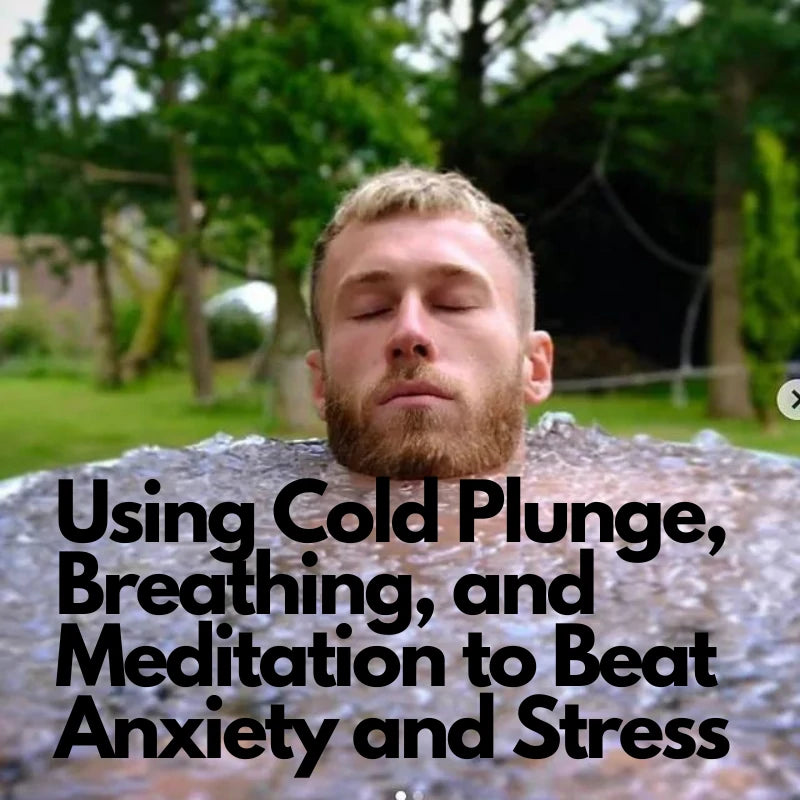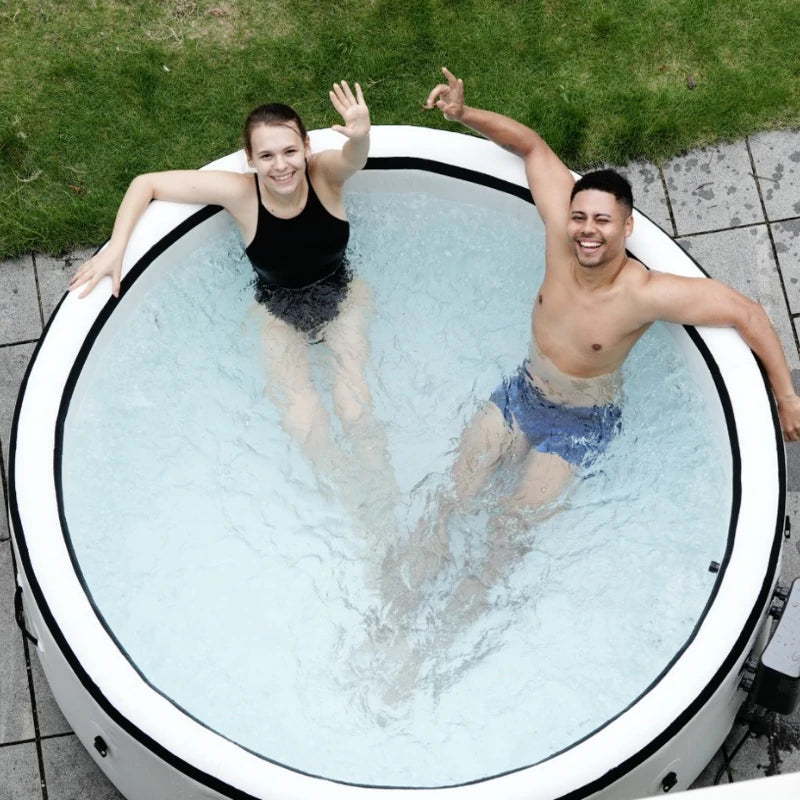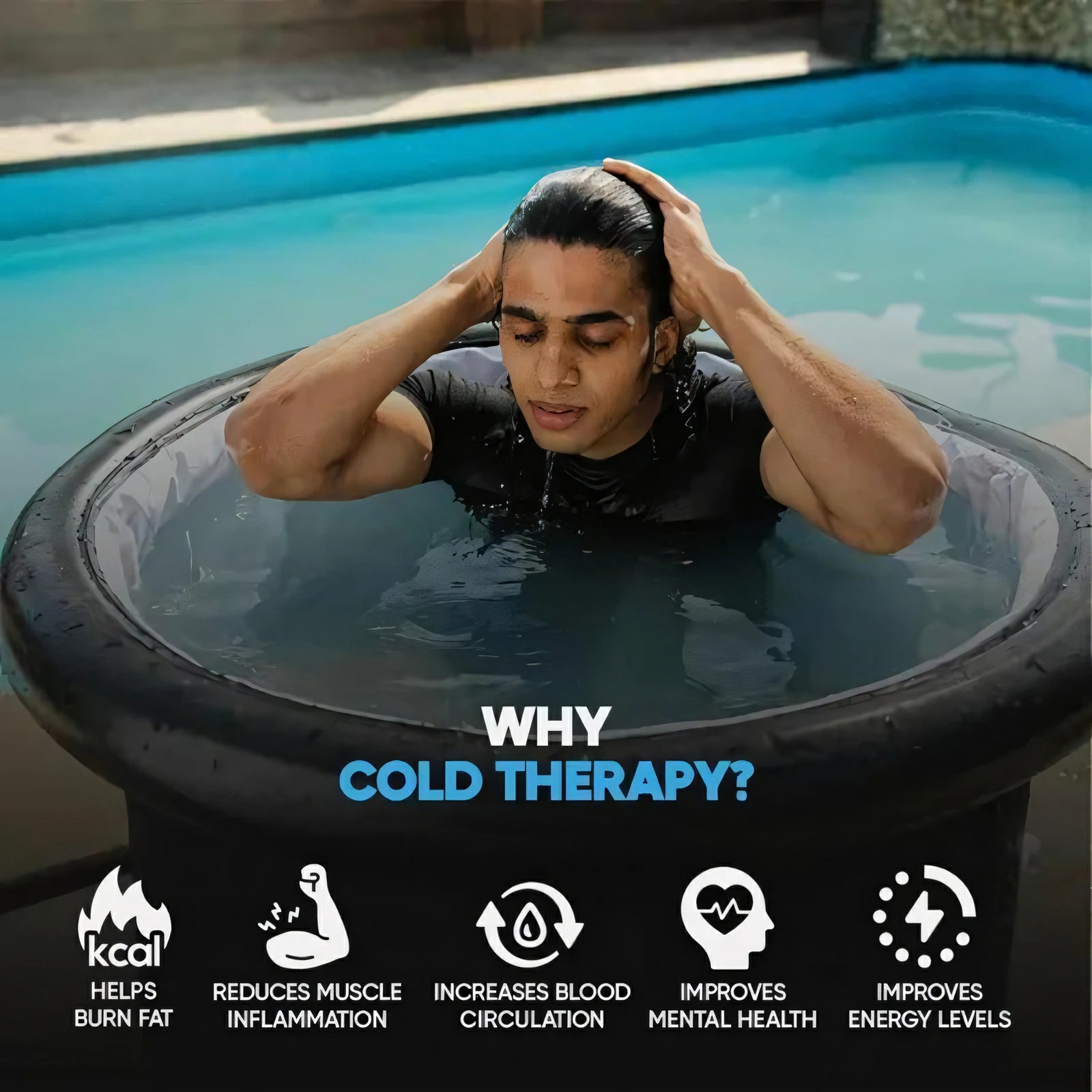Introduction

The Wim Hof Method (WHM) is gaining popularity for boosting physical and mental health. Created by Dutch athlete Wim Hof, it includes cold exposure, special breathing, and meditation. These elements help people control their bodies and minds, reducing stress and anxiety.
The WHM appeals to athletes, wellness fans, and the medical community as an anxiety treatment. Cold water exposure, a key part of WHM, is especially effective. It triggers body responses that aid relaxation and clarity. This article explores how cold exposure in WHM helps manage anxiety and improves mental health.
Learn more about the complete guide to the Wim Hof Method.
1. Is a Cold Plunge Good for Anxiety?

Cold water exposure, or "cold plunge," significantly benefits anxiety management. Sudden cold exposure kicks your nervous system into high gear, releasing endorphins and norepinephrine. These chemicals lift your mood, easing stress and anxiety.
Initially, the cold plunge triggers a “fight-or-flight” response. However, with regular exposure, your body adapts, reducing daily stress responses. Studies show that it improves mood regulation and enhances stress management. Adding cold plunges to your routine can lower anxiety and boost mental strength.
Read more about the health benefits of cold water exposure.
2. Why Does Cold Water Help My Anxiety?

Understanding the body's response to cold water explains its anxiety relief. Cold immersion activates the vagus nerve, which promotes relaxation. This counters the stress-induced “fight-or-flight” response, balancing the nervous system.
Additionally, the shock of cold water shifts focus away from anxious thoughts. This mindfulness mirrors meditation and cognitive behavioral therapy, breaking the cycle of anxious thinking.
Read more about the science behind cold water exposure and the nervous system.
Additionally, the shock of cold water exposure forces your body to focus on the immediate sensation, shifting your attention away from anxious thoughts. This mindfulness component is similar to practices used in meditation and cognitive behavioral therapy, providing a break from the rumination that often accompanies anxiety.
3. How to Use Ice Baths for Anxiety Relief

Start with short ice baths and gradually increase the time. Beginners should aim for 1-3 minutes in water (10–15°C or 50–59°F), focusing on deep breathing.
For home setups, safety is key. Invest in a cold plunge tub or use affordable inflatable options. Always monitor water temperature and listen to your body.
Learn more about how to safely use ice baths at home.
4. The Science Behind Cold Plunge and the Nervous System
Regular cold exposure through WHM impacts the autonomic nervous system, which controls functions like heart rate. It balances the sympathetic (stress response) and parasympathetic (relaxation) systems. This reduces stress responses in anxious individuals, promoting calmness.
Explore more about the science behind cold exposure.
5. Can Ice Baths Stop or Cure Anxiety?

Ice baths aid anxiety management but aren't a cure. They should be part of a broader strategy, including mindfulness, breathing, and possibly therapy.
The WHM combines breathing and meditation with cold exposure for a stronger approach. However, it's crucial to understand that cold plunges alone aren't a quick fix. Regular practice and supportive habits are key.
6. Integrating the Wim Hof Method: Breathing and Meditation

Breathing techniques involve deep breaths and pauses, preparing the body for cold exposure and regulating stress.
Meditation fosters mindfulness and improves emotional control. Combining it with cold exposure and breathing creates a powerful anxiety management strategy.
Discover more about integrating meditation with the Wim Hof Method.
Conclusion

The Wim Hof Method offers a viable way to manage anxiety with cold exposure, breathing, and meditation. Cold immersion boosts the nervous system, releases mood-enhancing chemicals, and aids stress adaptation.
Start slowly, stay consistent, and prioritize safety. For best results, combine WHM with other mental health strategies. Exploring cold immersion with mindfulness can lead to better mental health and resilience against anxiety.



